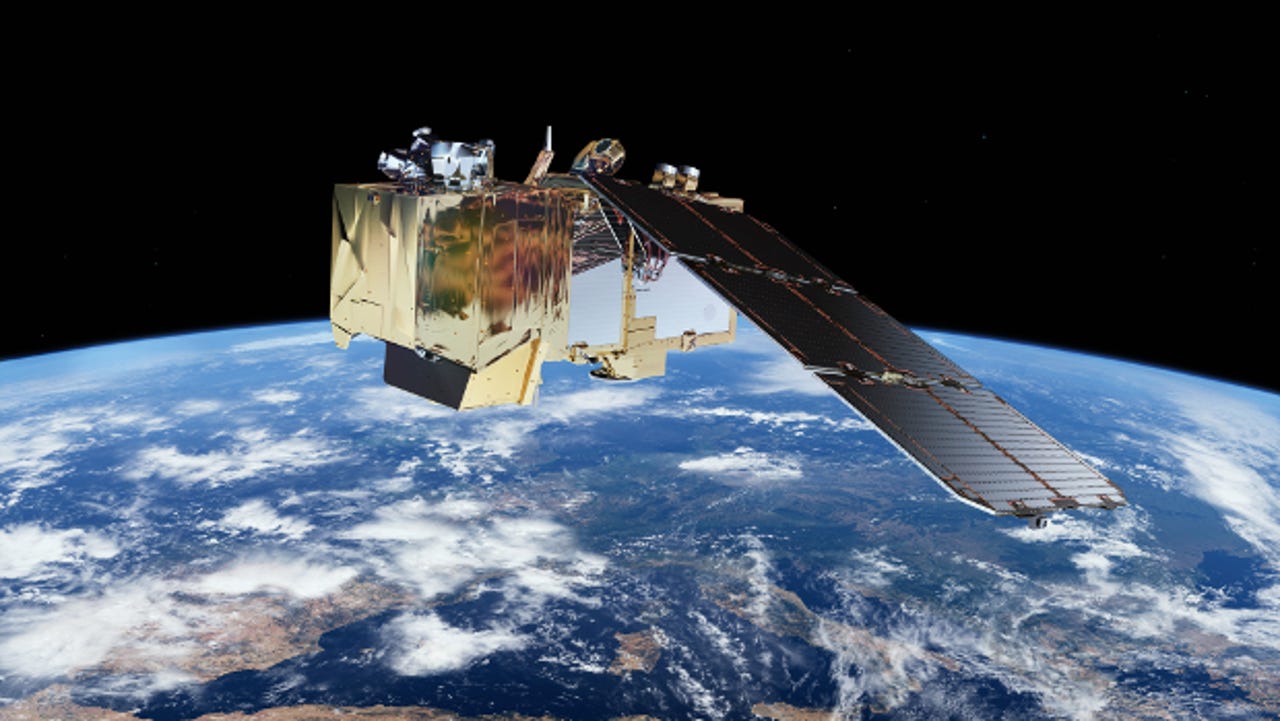Europe's eyes in space: How ESA's Sentinel-2 satellite scans pose petabyte challenge


When the European Space Agency's Sentinel-2B satellite joins its 2A twin in orbit next year, the project's volume of data in the form of images of the Earth's surface will soar to up to two petabytes annually.
To cope with that data growth, ESA has just expanded the 2013 contract it awarded Spanish company Indra to take it up to 2020 and to include data management for the twin satellites.
Robust long-term global records of essential climate variables, such as greenhouse gas concentrations, sea-ice extent and thickness, and sea-surface temperature and salinity, are crucial to understanding and mitigating the consequences of climate change.
Europe's eyes in space focused on Earth are provided by the Copernicus program, headed by the European Commission in partnership with ESA, which coordinates the delivery of data from upwards of 30 satellites. Among them are the Sentinels, which provide a unique set of observations that need to be processed and archived.
ESA's initial 2013 contract with Indra used the company's facilities at San Fernando de Henares, 15km from Madrid, as one of the main data-processing and archiving centers, or PACs, for the Sentinel-2A satellite mission's ground segment.
Read this
When both satellites are in operation, the Sentinel-2 mission will be capable of obtaining complete coverage of the Earth's land surface every five days -- or 10 days when only one satellite is in operation -- with a spatial resolution of up to 10 meters. The information supplied by these images will be especially useful in the fields of agriculture and environmental management.
According to Rosana Romero, head of Sentinel PAC project at Indra, the company's experience in missions such as Helios, SMOS, and Ingenio, and in providing similar services to other clients, as well as the various projects funded by ESA Earth Observation department, have had a significant bearing on ESA's decision to award it the expanded contract.
Tier 3 datacenter
The center located in San Fernando de Henares has a surface of 5,000 square meters (54,000 square feet) and is designed to fulfill the stringent levels of security demanded by ESA. It also offers an uninterrupted service level of at least 99.98 percent, according to Indra, equivalent to the characteristics specified for tier 3 facilities under the ANSI/TIA standards.
"A tier 3 datacenter offers redundant basic equipment, including power supplies," Romero said. "All servers have dual power, so the datacenter does not require stops for basic maintenance operations. In fact, the system ensures that the service will not be interrupted unless there is a case of force majeure such as a natural disaster," she added. Furthermore, servers and the communication network are monitored 24/7.
Images reach the datacenter via two 10GB lines for processing and archiving. The Long Term Archive system responsible for storing the products has been designed from scratch by Indra, which reported revenues of €2.94bn in 2014.
The entire project is funded by ESA/EC under the Copernicus program, formerly GMES. "The acquired knowledge and the developed architecture can be reused in any Indra project that needs to store and access large volumes of data, which on the other hand will be a common necessity in an increasingly digitized world," Romero said.
Useful imagery
The medium-resolution optical images such as those provided by the Sentinel 2B have been in use for the management of agriculture and the environment from the 1980s with the launching of LANDSAT and then the SPOT Earth observation satellite. Some examples of their utility are the maps of land use, such as those included in the CORINE Land Cover (CLC) project.
When Sentinel 2B images become available, they will be used by Indra in land monitoring and change-detection projects within the Copernicus program granted by the European Commission.
Read more about satellites
- Clearing up space junk: The system that's ready to decommission satellites before they even launch
- NBN satellite set for October 1 launch
- Optus claims 100 percent mobile coverage thanks to satellite app
- Cosmic communications: African telcos turn to satellites to bridge the connectivity gap